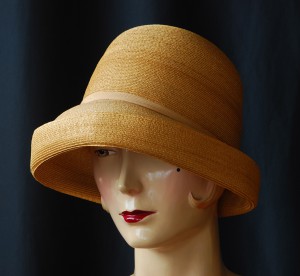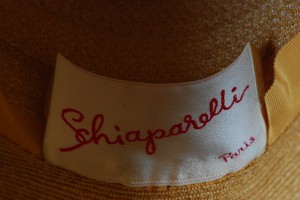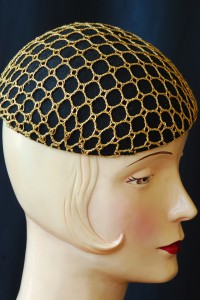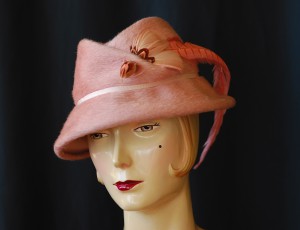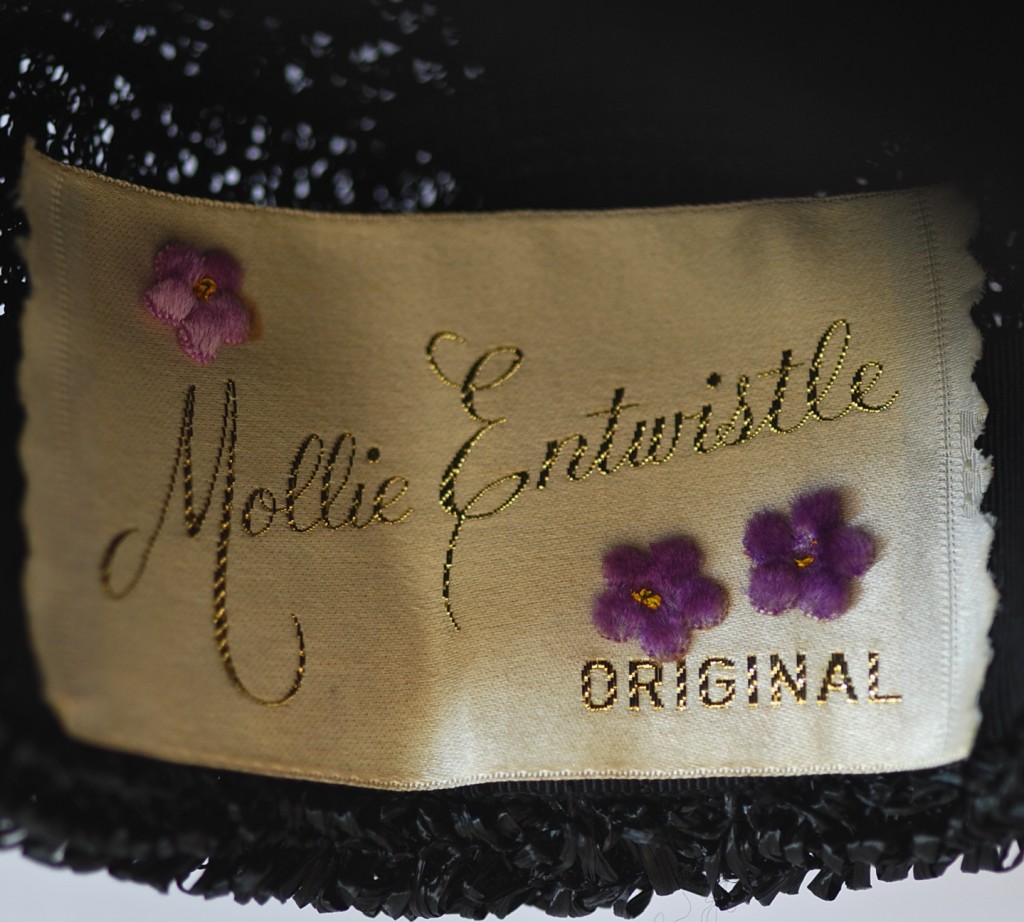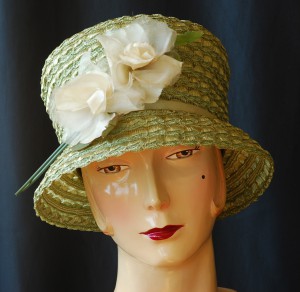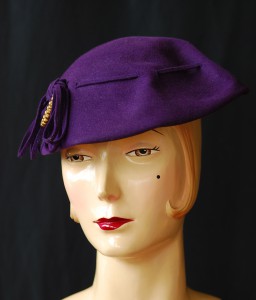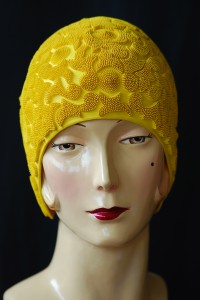How to Identify & Care For Vintage Hats
When I first started collecting vintage hats, it was enthralling to see all the different designs and colors. Hats from the thirties, forties and fifties were still fairly abundant in the late seventies and early eighties. It was considered “off the wall” to collect them. The general belief was that they would never be worn again. In fact, the key designers have retired or passed away, and many of the styles have never been made again. One thing remains true. Many people wear hats well. There are some gorgeous hats that have survived the test of time and chance.
How could they not fascinate us? A hat changes a person’s aura and creates a heady fashion statement that rivals no other part of the attire. During the 19th and 20th century, every design that could be conceived of was shaped into a hat. One of my favourite photographs is of a 1930’s hat that was listed in the Doyle Gallery in New York several years ago. It looked like a bees nest with bees buzzing all around it. There is a comic and whimsical element to a percentage of designs. Just as the hemlines went up after the war, the hats too, became either more utilitarian or more glamorous. The early 1900’s hats were still mostly wide-brimmed and decorated with flowers, berries, ribbons and even birds. The practice of taxidermy to place birds on hats was banned around 1909. Later on, in the forties – there was a bird revival. They used real feathers and made the body of the bird out of something else.
During the eighties, when I collected hats that were mostly dated from the 20’s through to the 60’s – it was because those were the hats that were available and fairly abundant. I did not pay much attention to labels, but studied each hat and bought what I liked. Inadvertently, I did end up with some well known designer labels. Elsa Schiaparelli, Lilly Dache, Macy’s, Stetson Fifth Avenue, Christian Dior, Mollie Entwistle, and Jerry Yates – are some of the designers who made vintage hats to marvel at. There are many other more obscure designers who made hats to the same level of quality as the luxury designers. All were affected by the Second World War, which caused some to flourish and others to fail.
When looking for vintage hats now, I look first for a label. If it is made in China, it is not vintage, even though it may be a vintage style. A label for a quality vintage hat will be fairly large (usually) and will be made of fabric that is stitched into place inside on the back of the hat. Some of the labels have a small flower attached on the side of the label. If there is no label and you believe it is vintage, check the brim, inside the crown, to see if there is heavy grosgrain ribbon. Also, if the hat has any embellishments, evaluate what they are made of, since certain types of fabrics, ribbons, flowers, etc. were used that are not modern day. Sometimes the maker and country of origin is printed inside on the crown of the hat.
Before I acquired some Stetson Fifth Avenue hats, for some reason I thought Stetson was associated only with cowboy hats. But, Stetson Fifth Avenue made some interesting and upscale hats of different styles. A large percentage of fall and winter vintage hats are made of doeskin felt. Some are made of sealskin, which is often dyed.
In the seventies, hats from the turn of the century were not available to the average person, unless you were a dealer, collector or museum. Hats from the thirties and forties seldom turn up in thrift stores anymore. The hats with face veils often get torn due to the fragility of the veils. Rubber bathing caps – unfortunately, there are only a few that have lasted – since rubber sticks together and disintegrates over time.
Most hats can be brushed with a soft bristle natural brush in the direction of the grain and steamed into shape. Unless they are for display, it is best to keep them in a box with some acid free tissue paper. Face veils, rubber bathing caps and feathers require extra attention. Be very careful when steaming hats with feathers and avoid it altogether if the feathers have been glued onto the hat.
Copyright Valerie J. Hayes and Quiet West Vintage (2014). Unauthorised use and/or duplication of this material without express and written permission from this blog’s author/owner is strictly prohibited. Excerpts and links may be used, provided that full and clear credit is given to Valerie J. Hayes and Quiet West Vintage with appropriate and specific direction to the original content.

